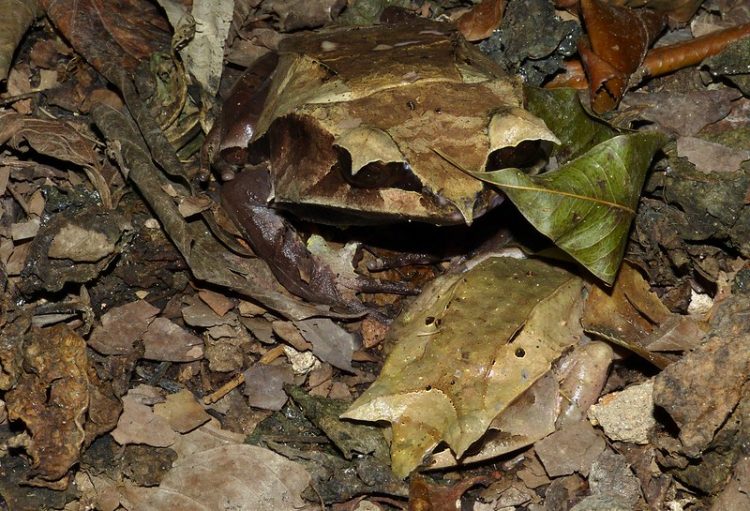The Malayan leaf frog, a.k.a long-nosed horned frog, is one of the most remarkable creatures on Earth, at least in terms of natural camouflage.
We’ve featured some truly impressive masters of camouflage in the past, from the dead leaf butterfly to a plant that evolved to mimic the rocky terrain it grows on, but the Malayan leaf frog is definitely up there with the best of them. As an ambush hunter that waits for unsuspecting prey to cross its path, this amphibian needs to remain unnoticed for as long as possible, and what better way to do that than blend into the leaf-covered forest floor it calls home? Its unique physical features make it almost impossible to visually detect in its natural habitat, and looking at the photos below, it’s easy to see why.

Photo: Bernard DUPONT/Flickr
Featuring triangular horn or leaf-like projections extending over each eye and its nose, as well as the brown color of dead leaves, complete with the veins and patterns of a leaf, the Malayan leaf frog can easily be mistaken for a dead leaf on the forest floor.
View this post on Instagram
Except when calling, these amazing frogs do a great job blending in with their surroundings, which helps them to both capture unsuspecting prey, as well as avoid predators.
View this post on Instagram
Researchers have reported on the difficulty of spotting leaf frogs during the day, as they tend to hide among dead leaves and stay perfectly still. The exact opposite is true at night, though, as light from flashlights easily reflects from its eyes, giving away its location.
View this post on Instagram
The Malayan leaf frog lives among leaf litter, in the permanently damp and cool lowland rainforests areas of southern Thailand, Peninsular Malaysia to Singapore, Sumatra and Borneo. Because its habitat covers such a large area, the population of leaf-mimicking frogs is believed to be very large, but deforestation is already considered a big threat to its existence, as it leads to habitat loss.
View this post on Instagram
The pet trade poses a threat to the survival of Malayan leaf frogs as well. The species is very popular with amphibian enthusiasts, and because efforts to reliably breed these frogs in captivity have so far failed, specimens are constantly being taken from the wild.
View this post on Instagram
For more amazing natural camouflage, check out this moth whose wings depicts two flies feasting on fresh bird droppings. This reportedly helps keep predators at bay.

 ️ (@xiedan55)
️ (@xiedan55)




